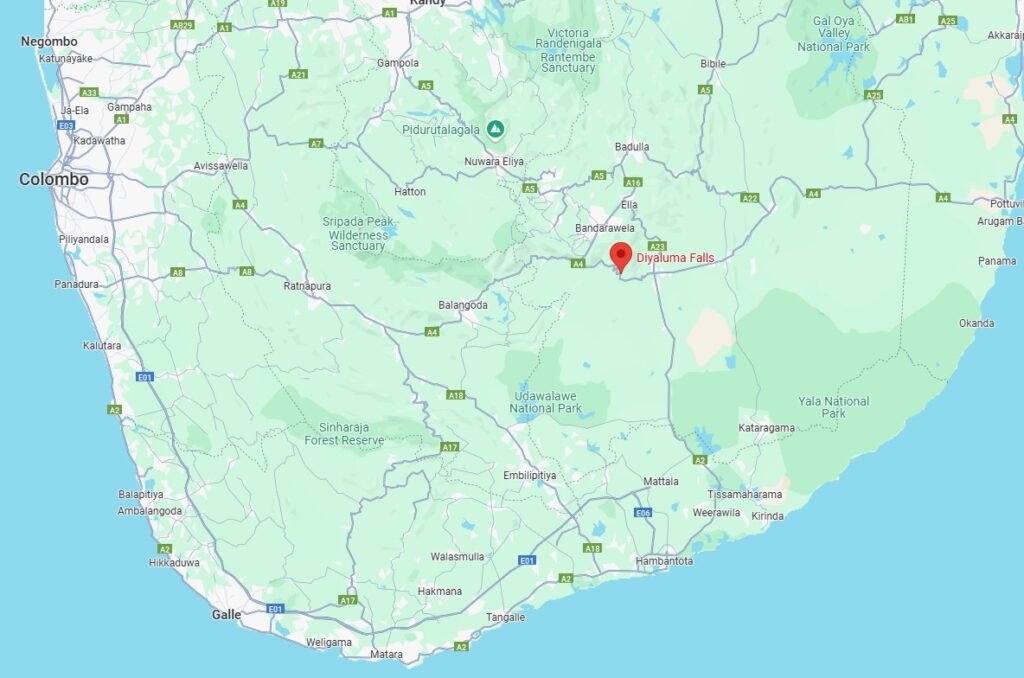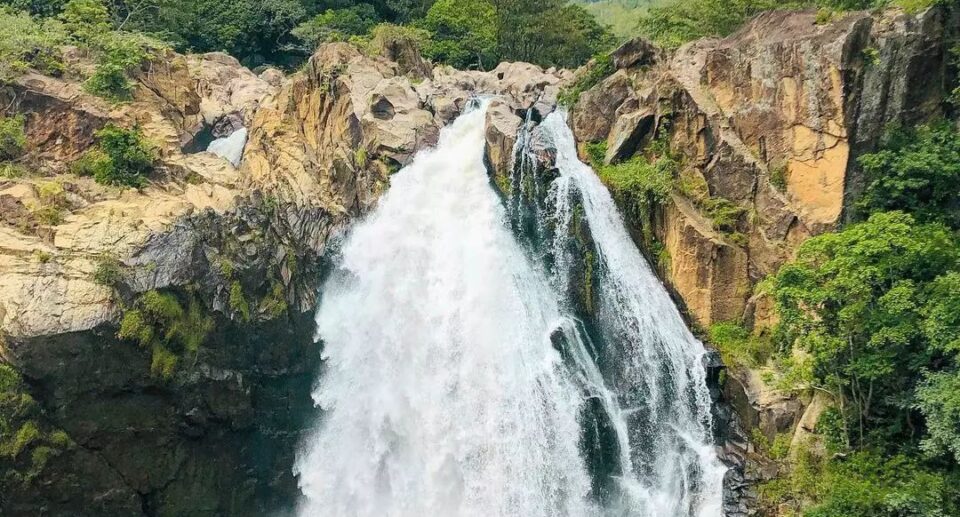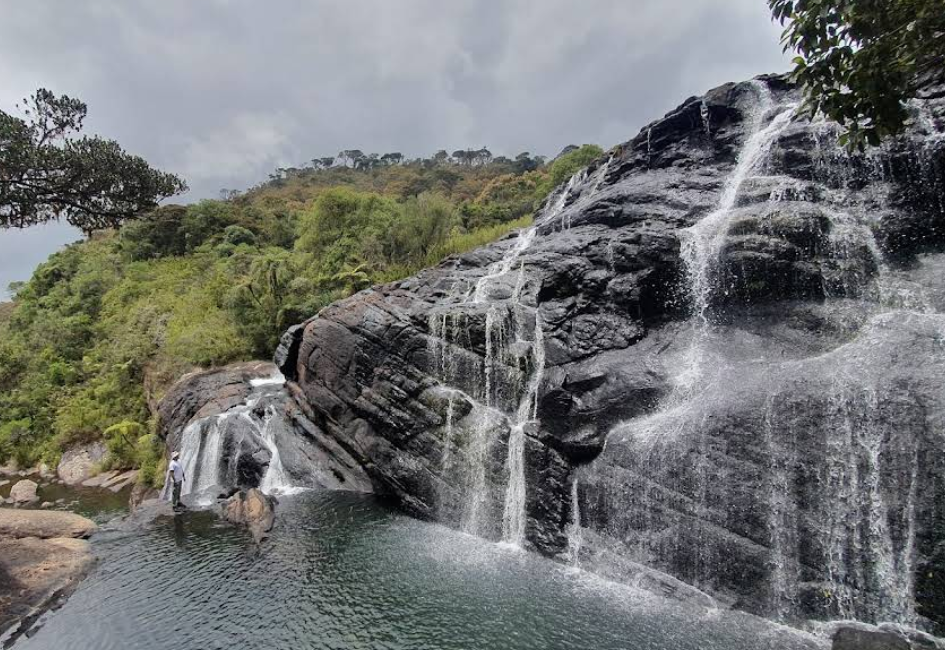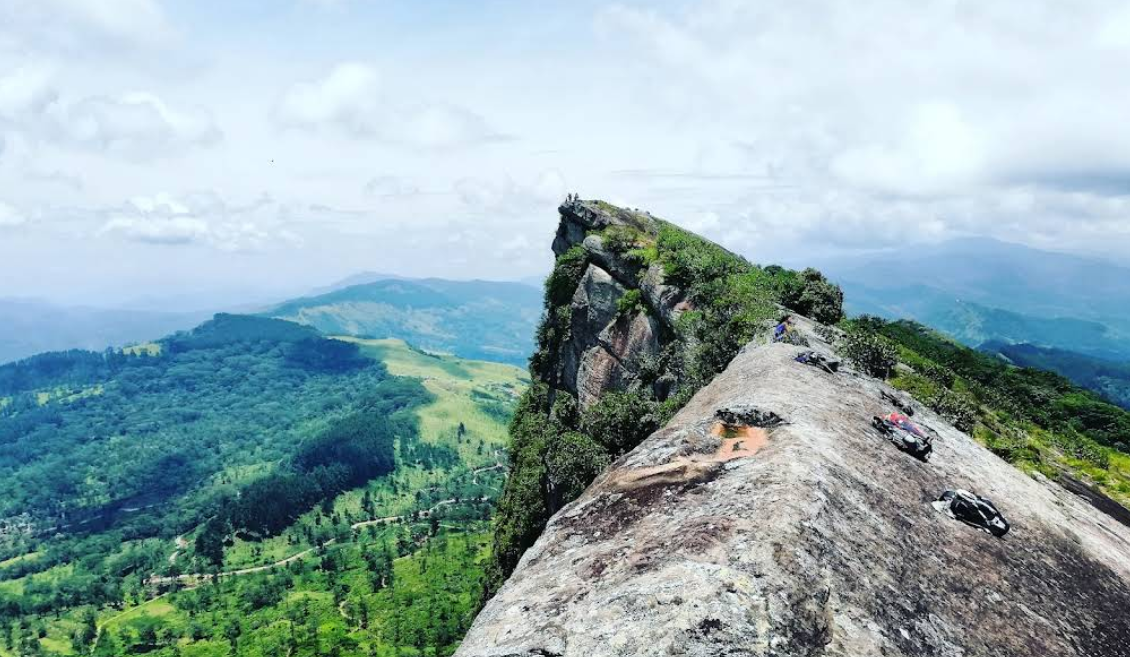Diyaluma Falls: A Majestic Cascade in Sri Lanka’s Highlands

In Sri Lanka’s Uva Province, foggy highlands where serpentine roads wind along tea estates and cloud forest, is one of the country’s most stunning natural sights — Diyaluma Falls. 220 meters (720 feet) tall, Diyaluma is Sri Lanka’s second-tallest waterfall and perhaps one of the most beautiful. Located in the region bordering Koslanda town in the Badulla District, this giant fall is a spot for nature lovers, trekkers, adventure seekers, and anyone who yearns for a cold getaway to the wilderness.
The Name and Its Meaning
The word “Diyaluma” is Sinhala, with the names “Diya” (water) and “Luma” (light stream or quick) combined. Translated roughly, Diyaluma means “flowing fast like water” or “liquid light,” a suitably poetic name for a waterfall cascading down cliff sides in glittering streams of light that blind observers.
It is also associated with an ancient local legend. It is said that a prince was banished from his kingdom for loving a girl of lower caste. The couple tried to elope, but in descending the cliffs to escape, the girl slipped and fell to her death. The gods, moved by the prince’s sorrow, caused water to flow from the mountain, symbolizing the tears of love and loss. Thus the waterfall was named Diyaluma — a place of tragic beauty and abiding memory.
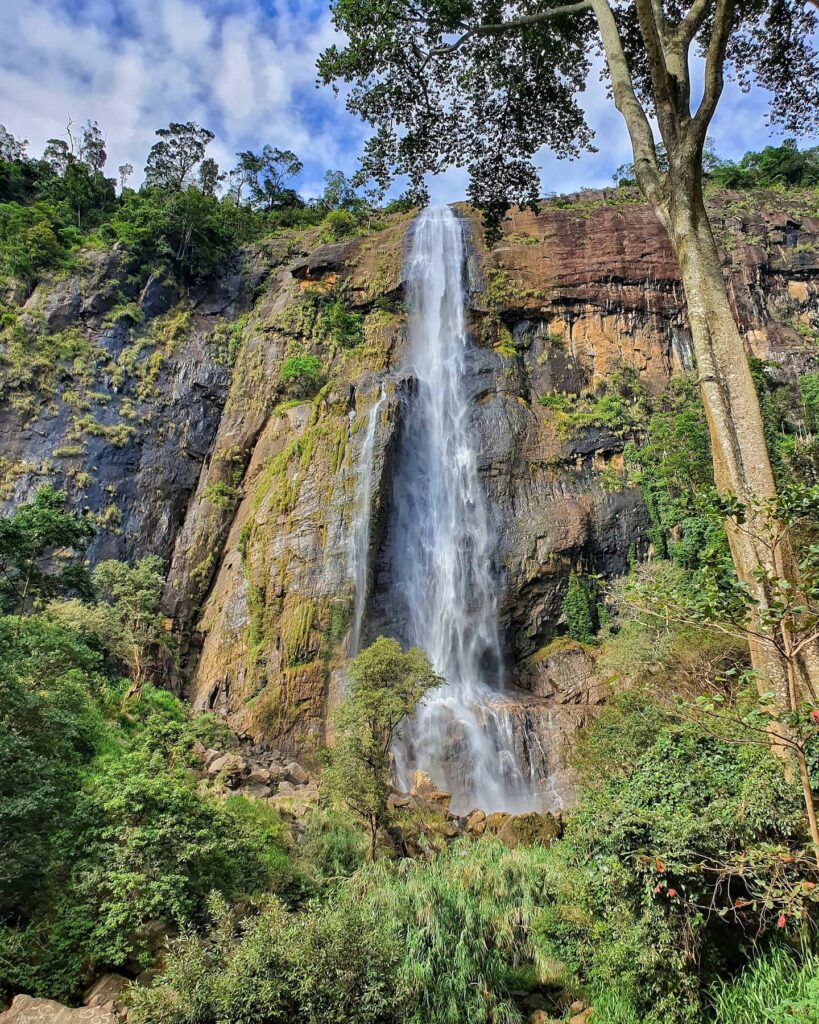
Geographical Location and Accessibility
Diyaluma Falls is located on the Beragala–Wellawaya road (A4), 6 km from Koslanda, and approximately 13 km from Wellawaya town. It lies between the central highlands and dry lowlands, and a lovely natural contrast of greenery and rocky escarpments ensues.
The waterfalls are easily accessible by road. Tourists coming from Ella (a popular hill station) can reach Diyaluma in one hour by road. From Colombo, it would take about 5 or 6 hours, depending on traffic and stops. There is public transport on the A4 road, but most of the tourists make use of private vehicles or tuk-tuks, especially when going to the upper sections of the falls.
The Unique Two-Part Waterfall
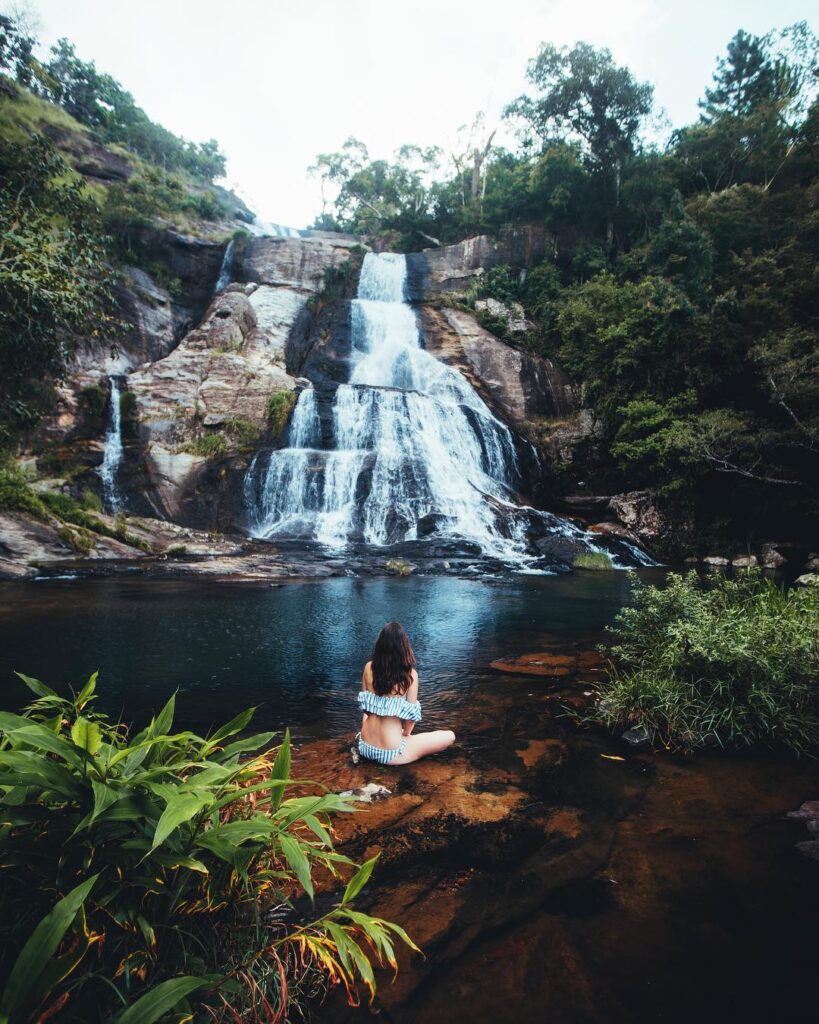
What’s unusual about Diyaluma is that it’s not a single cascade but a series of levels and natural pools that create very different experiences.
The Lower Falls: This is what most visitors have to witness from the road—a sheer, vertical drop off a cliff face that creates a steep vertical descent. The spectacle is stunning, especially during the monsoon months when there is plenty of water coming down. There is a base pool at the bottom, but it is not advisable to swim there due to strong currents and crashing rocks.
Upper Falls and Infinity Pools: Diyaluma stands out because it has its top section comprised of a group of natural pools made of rocks as well as small waterfalls which make their way to the brim of the main waterfall. The pools bear a look akin to nature-based infinity pools that have over time been crafted in the rocks to offer some of the country’s most mystical swim experiences. From here, you can sit along the rim and look down into the valley below, with water pouring down a mere few meters away.
The Hike to the Upper Falls
Although the bottom of Diyaluma is roadside, the top falls involve a trek, but it is worth every step. The trek begins from the Poonagala side, which can be reached through a turn-off close to Koslanda. It’s roughly a 45-minute to 1-hour walk, depending on your speed and the weather.
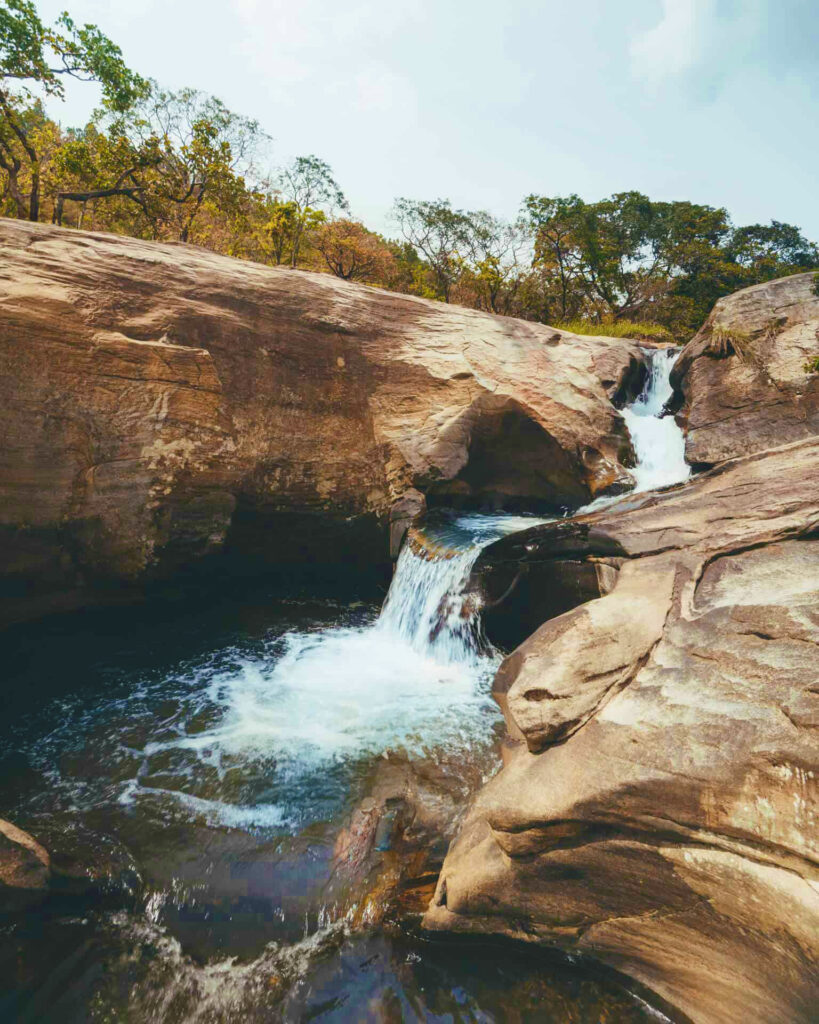
The trek takes one through tea estates, eucalyptus groves, and pastures, onto breathtaking vistas of the southern plains. There are a few small pools and streams along the way—great places to take a dip in to cool off. The last leg takes you to the edge of the cliff, where the entire drama of Diyaluma is laid out before you.
For ease and safety, it is strongly recommended that you employ a local guide, especially if this is your first time visiting. They will take you through the safest paths, point out unique photo spots, and share information on the area.
Swimming and Safety
The higher natural pools are okay for swimming during dry times when the water level is moderate. Use caution near the edges since the rocks are slippery, and have good shoes on. The water is cold and crystal clear, perfect for a mid-hike soak or dip while taking in the view.
However, during the rainy season, levels increase very rapidly and there is a risk from the currents. Swimming after heavy rain or in it is to be avoided, and local knowledge or notice boards should always be monitored.
When to Visit

It is advisable to go to Diyaluma Falls when it is during its dry seasons, which range from January to April and then July through September. It will be more predictable weather during these months, dried paths, and safe pool zones to swim.
Monsoon months, particularly May–June and October–November, can make the trail slippery and the falls more hazardous, even though the actual falls are strongest and best for photographs during these periods.
What to Bring
For a comfortable and relaxing trip to Diyaluma Falls, light but witty packing would be best: Good hiking boots or treaded sandals, Swimwear and towel, Sunscreen and hat (especially for the hike) , Drinking water and snacks, A water-resistant camera or phone for photography ,Small trash bag (take nothing but memories!) Raincoat (depending on the time of year)
Environmental Footprint and Responsible Travel
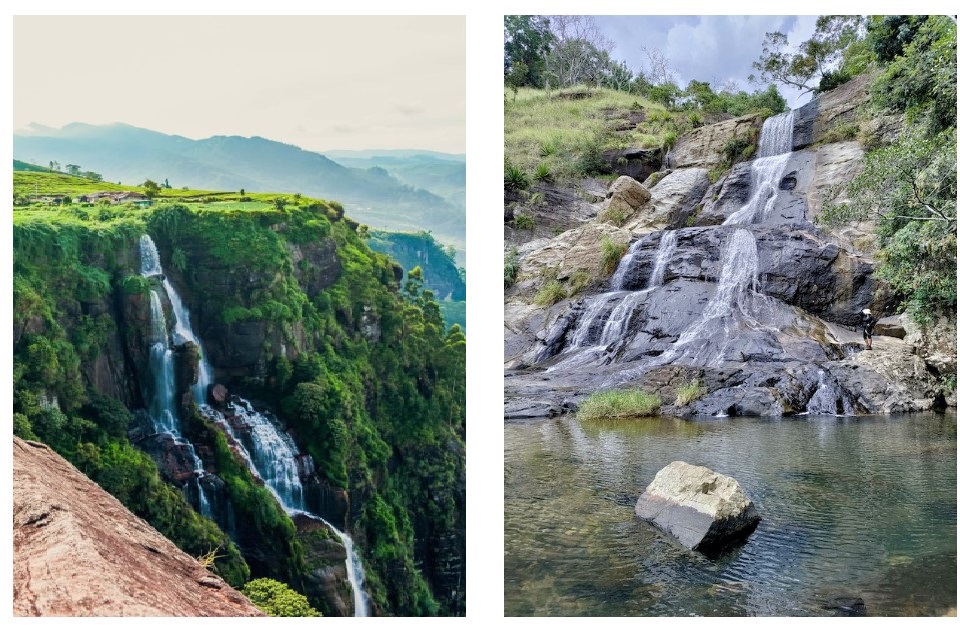
With Diyaluma Falls becoming more famous on social media and travel websites, this location is witnessing growth in tourist arrivals. Regrettably, this has resulted in greater littering and sometimes over crowding, particularly close to the pools.
Tourists are most advised to adopt eco-friendly methods: Take all rubbish home with you. ,Avoid plastic where possible.
Follow the path as indicated to help conserve indigenous vegetation. Be mindful of local customs and tread softly.
There have also been conservationists and guides who have been advocating for sustainable tourism within the region to ensure this natural wonder is left intact for future generations.
Nearby Sites
The surrounding Uva and Badulla region is rich with natural sites and cultural significance. Some nearby places to visit are:
Ella – A peaceful mountain village known for its hiking trails, such as Little Adam’s Peak and Ella Rock. Ravana Falls – Another breathtaking waterfall closer to Ella. Lipton’s Seat – A picturesque view point with tea estates that were previously owned by Sir Thomas Lipton. Buduruwagala Temple – An old rock temple that has magnificent Buddha carvings.
Final Thoughts
Diyaluma Falls is not merely a waterfall it’s an experience, a trek, a swim, and a sight that lingers long after departure. Its height, natural pools, and panoramic vistas combine to place it among Sri Lanka’s must-sees for anyone who dares seek adventure, tranquility, or simply a touch of nature.
Whether you’re standing at the bottom, looking out across the drop into the vertical emptiness, or lying in one of the rock pools at the top as the world curves away below, Diyaluma tends to make you feel small, and humble, and full of life.
